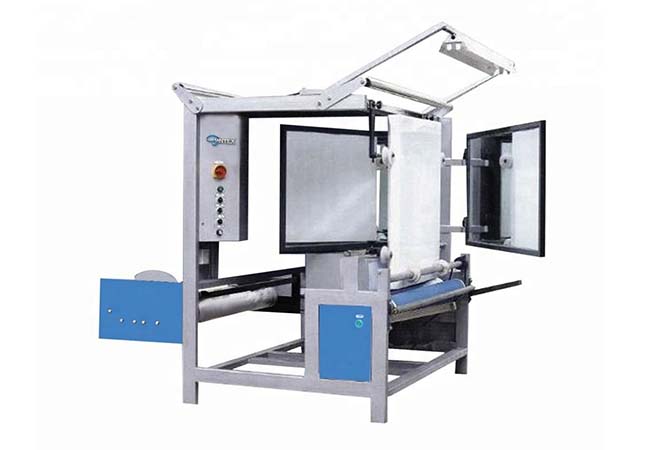A tubular fabric inspection machine is a specialized piece of equipment used in the textile industry to examine and evaluate tubular fabric for defects and inconsistencies. Choosing the right tubular fabric inspection machine is a critical decision for textile manufacturers, as it directly affects the quality of their products and their production efficiency.
Factors Should Considered When Selecting Tubular Fabric Inspection Machine
There are several factors that manufacturers should consider when selecting a tubular fabric inspection machine that best meets their needs. Here are some tips for choosing the right tubular fabric inspection machine.
1. Determine the Types of Fabric to be Inspected
The first consideration when choosing a tubular fabric inspection machine is the type of fabric to be inspected. Different machines are designed to inspect different types of fabrics, such as knits, woven fabrics, and nonwovens. It is important to select a machine that can handle the specific type of fabric that will be used in the production process.
2. Consider the Width and Speed of the Fabric
The width and speed of the fabric are other critical factors to consider when selecting a tubular fabric inspection machine, what is helpful to handle the width and speed of their fabrics, considering the maximum speed of the machine, as well as the average speed at which the fabric will be inspected is a must.
3. Evaluate the Accuracy and Consistency of Inspection
Accuracy and consistency are also important factors to consider when selecting a tubular fabric inspection machine. The machine should be able to detect and classify defects accurately and consistently, and provide clear and detailed images of the defects, is able to help to ensure that defects are identified and corrected before the fabric is used in production, reducing the risk of product failure and waste.
4. Assess the Cost of the Machine
The cost of the machine can vary depending on its features, accuracy, and production speed, manufacturers should evaluate their budget and determine the amount they are willing to spend on a machine that meets their specific requirements.
5. Look for Additional Features
In addition to the basic features, manufacturers should consider additional features that can enhance the performance and efficiency of the machine. For instance, some machines have automatic fabric alignment systems that ensure that the fabric is properly aligned during inspection, while others have automatic defect marking systems that identify and mark defects for further inspection or correction. So there is a must for the manufacture to assessment the different features of the machines and select the one that best meets their specific needs.
6. Evaluate Technical Support and Maintenance
The technical support and maintenance of the machine are also critical factors to consider when selecting a tubular fabric inspection machine. Manufacturers should evaluate the level of support and maintenance required to keep the machine running smoothly, including the availability of spare parts, software upgrades, and technical support. should also consider the machine's ease of use, including its user interface and training requirements.
ST-TFIM Tubular Fabric Inspection Machine
ST-TFIM Tubular Fabric Inspection Machine has been specifically designed for easy and efficient inspection of both sides of tubular fabric in a single pass operation. The fabric is loaded and passed through the fabric checking box, and with the help of two mirrors, the operator can easily check both sides of the fabric. This machine can be used to operate fabrics from roll to roll or plait, and with various other fabric inlet and outlet options.

Main Functions of ST-TFIM
1. Fabric Rolling Drawer: The upper delivery mode can lessen fabric tension, which is more convenient for inspection.
2. Controllable Inspecting Speed: The inspecting speed can be controlled by an inverter as per the requirement.
3. High Voltage Dispenser for Lighting System: This special device provides electricity power to the fabric checking box wirelessly.
4. Multi-size Inspecting Lighting Cabinets: It can achieve various fabrics in width from 18” to 50” as per the requirements of various fabrics, and it has installed a magnetic block in the bottom to suspend automatically against the roller to eliminate crease marks on the fabric.
5. 2 Modes of Fabric Layout: Rolling or plaiting for option.
6. Easy Operation Panel: Only a few push buttons are required to run the machine smoothly.
7. Remote Foot Pedal: It is used for more convenient operation.
Conclusion
In conclusion, choosing the right tubular fabric inspection machine is a critical decision for textile manufacturers. Manufacturers should consider factors such as the types of fabric to be inspected, the width and speed of the fabric, the accuracy and consistency of inspection, the cost of the machine, additional features, and technical support and maintenance. By carefully evaluating these factors, manufacturers can select a machine that meets their specific needs, enhances their production efficiency, and improves the quality of their products.




